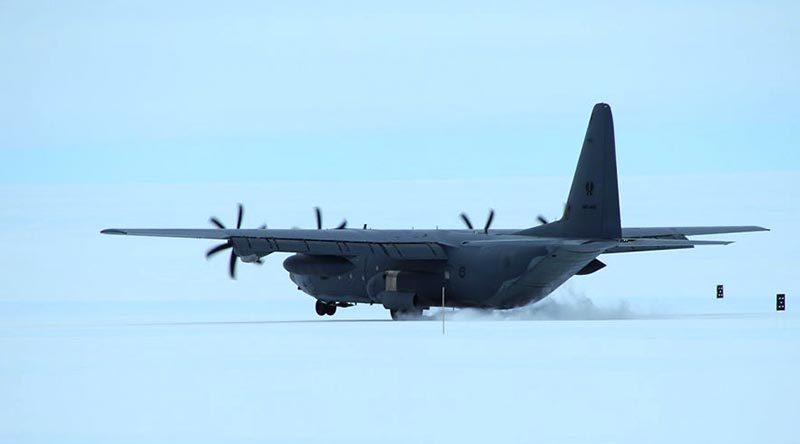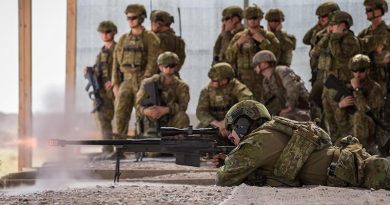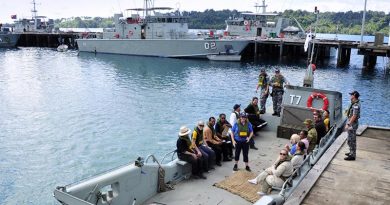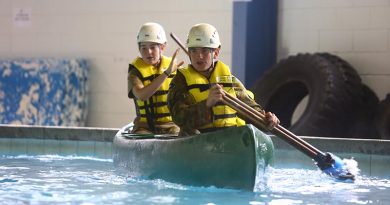RAAF Hercules makes historic landing in Antarctica
Share the post "RAAF Hercules makes historic landing in Antarctica"

A newly modified C-130J Hercules landed at Australia’s glacial runway at Wilkins Aerodrome in Antarctica, marking one of its longest ever flights.
CAPTION: An RAAF C-130J Hercules lands at Wilkins Runway, Antarctica. Photo by Christopher Burns, Australian Antarctic Division.
The Royal Australian Air Force C-130J was able to complete the 3450km – 6,900km return flight – from Hobart using two additional external fuel tanks fitted beneath the wings.
Director of the Australian Antarctic Division Kim Ellis said the flight south to the 3.5km ice runway took about 6.5 hours.
“The Hercules delivered 780kg of cargo to Australia’s expeditioners at nearby Casey research station,” Mr Ellis said.
“This is another great capability the Australian Antarctic Program now has to reach our stations, deliver cargo and provide medical support to our people working in Antarctica.”
Wing Commander Dion Wright, Commander Australian Contingent for Operation Southern Discovery, said the flight was one of the longest-range missions undertaken by an Australian C-130J Hercules.
“The additional tanks increased the Hercules’ fuel capacity from 19 to 27 tonnes, giving us the flying range to support missions such as this,” Wing Commander Wright said.
The plane carried extra fuel with it and was topped up on the ground at Wilkins.
“Using the C-130J provides additional capacity for the RAAF to support the Australian Antarctic Division than by relying on the C-17A Globemaster alone.”
The Australian Antarctic Program already uses Defence’s C-17A Globemaster for cargo operations, with six flights scheduled over this summer season.
The RAAF has been supporting the Australian Antarctic Program through Operation Southern Discovery since 2016.
.
.
.
.
.
.

.
.
Share the post "RAAF Hercules makes historic landing in Antarctica"






For 40 – 50 odd years RNZAF C-130H, USN & USAF C-130H & LC-130 Hercules have been flying Christchurch to Pegasus / Phoenix Fields at McMurdo, a distance of about 2,100 nautical miles (~3,900 km). The only problem has been that a PSR (Point of Safe Return) is required to be calculated and included in the flight plan. The same requirement exists with the RNZAF B757-200 Combi, and the civilian Australian registered A319. USAF C-17A Globemaster III aircraft fly the route regularly over the summer and during WINFLY, which is the winter flight schedule between Christchurch and Phoenix Field.
Whilst it is great to see the RAAF finally establish the air bridge between Australia and the Ice, one wonders why it has taken so long to stand up such an obvious capability, especially when it already had the required assets in service. They could’ve undertaken the necessary training and gained the necessary experience with the RNZAF and USAF, who have, as we’ve seen above, have decades of experience of operating on the ice.